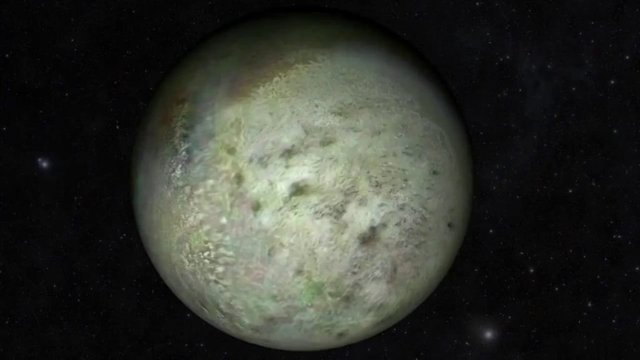Are we going to Tryton?
The American Space Agency NASA has proposed a mission to Triton, the largest moon of Naptuna. On this globe, under a thick layer of ice, there may be water oceans and life in them.
Triton is one of the least studied globes of the solar system. In fact, we only have photos of him thanks to the Voyager2 mission. They show an ice world that is ... geologically active. The probe has discovered that cryovulans (ice geysers) operate on the moon. However, the photos in question were taken 30 years ago (in 1989) by a device designed and built almost 50 years ago. So it's time to update the data we have.

A few days ago, NASA representatives, at a specially convened press conference, proposed to send a small (and cheaper) probe to Triton to study some moon parameters. Among them the possibility of existence on Triton (and basically under its surface) a simple, bacterial life.
Because of the solid nitrogen and carbon dioxide, Triton is very bright (reflects a lot of sunlight) and ... looks like a melon. At least in some areas. In addition to them, the surface of the moon is cut by deep furrows hundreds of kilometers long. The moon is geologically active (and this is a phenomenon in the solar system) and it is because of this activity that the furrows are formed. And also ice volcanoes. Triton is Neptune's largest moon, but from the planet's surface it is only the eighth in order. Interestingly, it is the only - of the large - moon in our system, which moves in a reverse motion. In other words, it rotates in the opposite direction to the planet's rotation. This means that Triton was not made with Neptune, but was captured by gravity later. Not enough that Triton did not arise with his planet, most likely, Neptune will "survive" it. Triton is slowly approaching the planet's surface and will collide with it in 1.5 to 3.5 billion years. 25% moon consists of water, and in the remaining 75 percent from rock material. At the moment of collision, it will scatter like broken glass into many small pieces, creating around Neptune rings similar to those of e.g. Saturn.
Triton is one of the coldest places in the solar system. In terms of size, it is basically no different from Pluto and is only slightly smaller than our moon. Around Neptune, it moves at a similar distance as the Moon from Earth. Photos taken by the Voyager2 probe show that plumes of ice chunks, liquid nitrogen and methane are thrown to a height of up to 8 km above the moon's surface. Gases (methane, ammonia and carbon dioxide) also come from these icy eruptions, which create a very rare atmosphere. Its composition varies greatly depending on the season. And those on Triton, however, change quite rarely, because every few dozen Earth years.
To the question in your title, my Magic 8-Ball says:
Hi! I'm a bot, and this answer was posted automatically. Check this post out for more information.